Megjegyzések / Kérdések (62)
![]() Glenna Blomquist írta:
Glenna Blomquist írta:
I don't understand this correction - the symbols are not numbered? This pattern has been corrected. Click here to see the correction/s. Updated online: 17.04.2009 Chart text: Symbol 4 and 5 has been exchanged. M.1 S+M+L: New row 19
25.02.2024 - 21:25A DROPS Design válasza:
Dear Mrs Blomquist, the online pattern has already been updated, this means the' correction applies only if you printed the pattern before that day, if you did, you might have to print it again to be sure you get all informations right. Happy knitting!
26.02.2024 - 09:48
![]() Elizabeth Dolan írta:
Elizabeth Dolan írta:
Is there a stitch count listed somewhere for this pattern? I am at the end of the second pattern section of M1 chart and seem to be out 3 stitches after decreasing (k2tog. K14 row). Would love to know how many stitches I should have on needles for this row. I am knitting the largest size.
25.07.2020 - 08:36A DROPS Design válasza:
Dear Mrs Dolan, do not hesitate to add markers between each repeat this will help you to check the number of stitches on each row as in diagram - Diagram is repeated 16 times in total in size XXXL. Happy knitting!
29.07.2020 - 08:50
![]() Elizabeth Dolan írta:
Elizabeth Dolan írta:
I have the correct St count for XXXL (330) starting M1 chart. I am doing kf&b as the increase but I cannot get the increases to work out with the chart. Do I do the increase on the 10th stitch? I wish there was a row by row stitch count.
22.07.2020 - 09:17A DROPS Design válasza:
Dear Mrs Dolan, on first row in M.1 you will work diagram like this: (knit front and back 1st stitch, knit next 9 sts), repeat from (to) for 1 repeat in M.1 (= adding markers between each repeat can help). and repeat to the end of the row. You will first increase stitches then work and decrease as shown in diagram - read more about diagrams here). Happy knititng!
29.07.2020 - 08:47Kira írta:
Hello, it said my comment was too long so again: Chart M1 is there a decrease between row 11 and 12 as the row gets shorter in the graphic? Also row 13, p2tog purl 16, so a repeat of 18 st or p2tog at the start of row and then purl the rest of row? Same for row 15, k 15 st slip 1 stitch, repeat all 17 stitches? Or only a final slip 1 stitch at very end of row? Thank You!
18.10.2018 - 14:57A DROPS Design válasza:
Dear Kira, when working M.1 you will repeat the sts in M.1 as shown in diagram (you can insert a marker to separate each diagram on your needle so that you can always check the number of sts). You will then increase 2 sts in each M.1 on the first row. Then, on row 11 you will decrease 8 times but work only 4 yo's = you will decrease 4 sts in each repeat. On row 13, work: *P2 tog, P16*and repeat from *-* over each repeat. And so on for each row in M.1. Happy knitting!
18.10.2018 - 16:01
![]() Dominique írta:
Dominique írta:
Bonjour, pour l\'empiècement, avant de commencer le diagramme il reste pour la taille L 250 mailles, les 10 mailles de bordure sont elles comprises dans ces 150 mailles \r\nmerci pour votre réponse \r\ncordialement
06.06.2018 - 08:28A DROPS Design válasza:
Bonjour Dominique, les 10 m de bordure devant sont comprises dans les 250 mailles, mais vous ne devez pas diminuer au-dessus des 5 m de chaque côté, tricotez-les simplement comme avant. Bon tricot!
06.06.2018 - 10:08
![]() Rebecca írta:
Rebecca írta:
Would you be able to tell me the measurements for the sleeves if I wanted them long, to my wrists and not 3/4 length? Thank you!
16.01.2018 - 04:27A DROPS Design válasza:
Dear Rebecca, we are unfortunately not able to adjust every pattern to each individual request but you can adjust sleeve length to your own measurements getting help from similar patterns with same tension. Happy knitting!
16.01.2018 - 09:19
![]() Jessica írta:
Jessica írta:
Bonjour je ne comprends pas bien l'EMPIECEMENT des manches. Auriez vous une vidéo pour m'aider ? Merci
28.09.2016 - 21:11A DROPS Design válasza:
Bonjour Jessica, quand les manches sont faites, on les remet sur la même aiguille circulaire que le dos et les devants (cf vidéo ci-dessous) et on va tricoter 1 rang sur l'end en répartissant des dim, 1 rang end sur l'env puis on continue ainsi: 5 m point mousse, on répète M.1 en largeur jusqu'à ce qu'il reste 5 m, 5 m point mousse. Bon tricot!
29.09.2016 - 09:08
![]() Anja írta:
Anja írta:
Kan ik dit patroon ook breien van BRUSHED ALPACA SILK?
12.04.2016 - 15:42A DROPS Design válasza:
Hoi Anja. Ja, dat kan. Je kan hier lezen hoe je de hoeveelheid materiaal berekent en vergeet niet om een proeflapje te breien.
13.04.2016 - 16:40Véro írta:
Bonjour, Je trouve ce modèle très joli. Existe-t-il en français car moi et l'anglais ... heum heum ! Merci d'avance de la réponse. Véro
07.04.2016 - 19:32A DROPS Design válasza:
Bonjour Vero, changez la langue du modèle en cliquant sur le menu déroulant sous la photo "Choose your language:English" et sélectionnez "Français". Bon tricot!
08.04.2016 - 08:32Jessica írta:
Bonjour, Je suis bloquée dès le début. Je ne comprend pas si les 223 mailles montées (je fais le xxl) comprennent le 5 mailles bordures ou je dois les rajouter ? Merci de votre réponse
02.09.2015 - 22:14A DROPS Design válasza:
Bonjour Jessica, les mailles de bordure des devants de chaque côté sont comprises dans le nombre de mailles à monter. Bon tricot!
03.09.2015 - 09:18
Avery#averycardigan |
||||||||||||||||||||||||||||||||||
|
|
||||||||||||||||||||||||||||||||||
Kötött DROPS kardigán kerek vállrésszel és struktúra mintával " Silke Alpaca " fonalból S - XXXL
DROPS 113-17 |
||||||||||||||||||||||||||||||||||
|
Rizsminta: 1. sor: * 3 F 1 S. *. Ism a *-* közötti részt, majd 1 F szemmel fejezzük be. 2. sor: A fordított szemek felett simával kötünk, a sima szemek felett fordítottal. Ismételjük a 2. sort. LUSTAKÖTÉS (a kötőtűn oda-vissza): Minden sorban sima szemekkel kötünk. LUSTAKÖTÉS (körben): 1 sima kör, 1 fordított kör. TANÁCS A MÉRÉSHEZ: A minta textúrája, és a fonal súlya miatt minden mérést a darabot függőlegesen tartva kell elvégeznünk. GOMBLYUKAK: A gomblyukakat a jobboldali gomboláspánton készítjük el. 1 gomblyuk = láncoljuk le az eleje közepétől számolt 3. szemet. A következő sorban szedjünk fel egy új szemet a leláncolt szem fölött. A gomblyukakat akkor készítsük, amikor a darabunk: S méretben: 7, 16, 26, 36, 46 és 56 cm M méretben: 7, 15, 23, 31, 40, 49 és 58 cm L méretben: 7, 15, 24, 33, 42, 51 és 60 cm XL méretben: 7, 16, 25, 34, 43, 52 és 62 cm xXL méretben: 7, 15, 23, 31, 39, 47, 55 és 64 cm xXxL méretben: 7, 15, 23, 31, 39, 47, 55 és 64 cm: Minta: Lásd az M.1 jelű mintát, a diagram a mintát a színe oldal felől mutatja. Válasszuk a méretünknek megfelelő diagramot. --------------------------------------------------------------------- TESTRÉSZ: Körkötőtűn kötjük, oda-vissza. A kezdéshez szedjük fel 159-173-187-203-223-245 szemet (ebben benne van mindkét oldalon 5 szem a gomb pánthoz) a 4,5 mm-es körkötőtűre a Silke Alpaca fonallal. Kössünk 1 sort F szemekkel a FO felől, majd folytassuk RIZSMINTÁVAL - olvassuk el a fenti magyarázatot - mindkét oldalon 5 lustakötéses szemmel a gomb pánthoz - olvassuk el a fenti magyarázatot. Az eleje gomb pánt szemeit végig 2 szállal és lustakötéssel kötjük. Amikor a darabunk 6 cm-es, folytassuk harisnyakötéssel-minden szemen. A gomb pánt szemeit a korábbiaknak megfelelően lustakötéssel kötjük. Tegyünk 2 jelölőt a darabba, mindkét oldaltól 42-45-49-53-58-63 szemnyire (= 75-83-89-97-107-119 szem marad a két jelölő között a hátához). Ne felejtsük elkészíteni a GOMBLYUKAKAT a jobboldali gomb pánton - lásd a fenti magyarázatot! Amikor a darabunk 10 cm-es mindkét jelölő mindkét oldalán fogy 1-1 szemet (= 4 szemet fogy körönként. Ismételjük meg a fogy-t 9-9,5-10-10,5-11-11,5 cm-ként, összesen 3 alkalommal = 147-161-175-191-211-233 szem. 2 szemet simán összekötve fogyasztunk. Folytassuk a kötést, amíg a darabunk 33-34-35-36-37-38 cm-es lesz. OLVASSUK EL A FENTI TANÁCSOT A MÉRÉSHEZ! Most láncoljunk le 8 szemet mindkét oldalon a karöltő kialakításához (vagyis mindkét jelölő mindkét oldalán 4-4 szemet) = 131-145-159-175-195-217 szem marad a kötőtűn. Tegyük félre a darabot és kössük meg a két ujját. UJJA: Körben kötjük a kéthegyű kötőtű-készleten. A kezdéshez szedjünk fel 49-51-51-55-57-59 szemet az 4,5 mm-es kéthegyű kötőtű készletre, a Silke Alpaca fonalból. Kössünk 6 kört lustakötéssel- lásd a fenti magyarázatot. Tegyünk 1 kötésjelölőt a kör kezdetéhez= az ujja alsó középvonala. Amikor a darabunk 10 cm-es, a jelölő mindkét oldalán szaporítsunk 1 szemet. Ismételjük meg a szaporításokat 9-4,5.5-2-1,5-1.5-1.5 cm-ként, összesen 2-3-5-6-7-8 alkalommal = 53-57-61-67-71-75 szem. Amikor a darabunk 23-23-22-22-21-31 cm-es ( a nagyon méreteknél a szélesebb vállak, és az ujja felsőbb ívének nagyobb hossza miatt rövidebb az ujja) láncoljunk le 8 szemet az ujja alatt középen (= a jelölő mindkét oldalán 4 szemet) = 45-49-53-59-63-67 szem. Tegyük félre a darabot és kössük meg a másik ujját. VÁLLRÉSZ: Csúsztassuk az ujjak szemeit ugyanarra a 4,5 mm-es körkötőtűre, amin a testrész szemei vannak, ahol a szemeket leláncoltuk a karöltőhöz =221-243-265-293-321-351 szem a kötőtűn. Kössünk 1 sort sima szemekkel a SZO felől (a gomb pántokon a korábbiaknak megfelelően folyt), miközben UGYANAKKOR a sorban egyenletesen elosztva fogy 11-13-15-3-11-21 szemet= 210-230-250-290-310-330 szem. Kössünk 1 sort S szemekkel a FO felől, majd folyt az M.1 jelű mintával a SZO felől (a megfelelő méretet keressük a diagramon), mindkét oldalon 5-5 lustakötéses szemmel a gomb pánthoz. Az M.1-es minta sorainak 1 ismétlése után 100-109-118-122-130-138 szem marad a kötőtűn. Kössünk 1 sort sima szemekkel a SZO felől, miközben UGYANAKKOR egyenletesen elosztva fogy 8-17-20-24-24-32 szemet= 92-92-98-98-106-106 szem. Kössünk 5 sort sima szemekkel, minden szemen, majd lazán láncoljunk le a szemeket. ÖSSZEÁLLÍTÁS: Varrjuk össze a nyílást az ujjak alatt. Varrjuk fel a gombokat. |
||||||||||||||||||||||||||||||||||
Diagram magyarázatok |
||||||||||||||||||||||||||||||||||
|
||||||||||||||||||||||||||||||||||
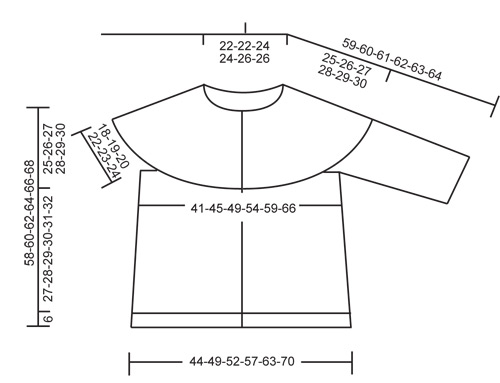
|
||||||||||||||||||||||||||||||||||
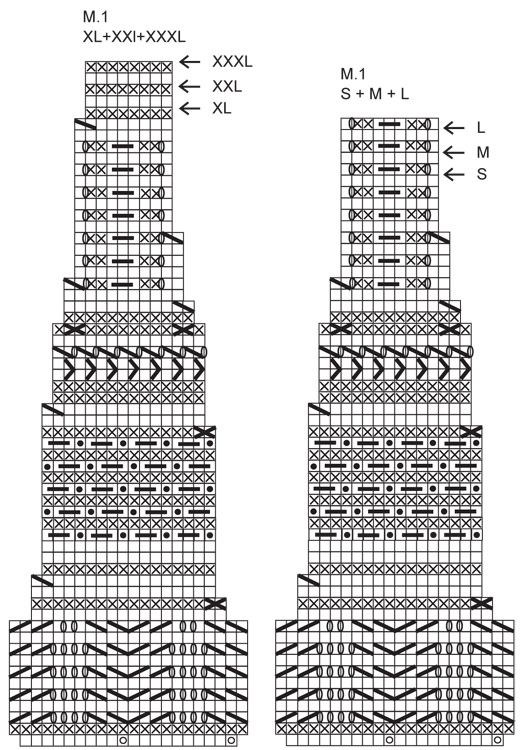
|
||||||||||||||||||||||||||||||||||
Elkészítette ezt a mintát?Akkor adja a képeihez a #dropspattern #averycardigan tageket, vagy küldje be a képet a #dropsfan galériába. Segítségre van szüksége a modell elkészítéséhez? 25 tutorial videót találhat, és egy kérdés/felelek részt, és még többet, ha a mintát megkeresi a garnstudio.com oldalán. © 1982-2025 DROPS Design A/S. Minden jog fenntartca. Ez a documentim, az összes részével védelem alatt áll. A weboldalunkon többet olvashat arról, hogy mit tehet és mit nem a mintáinkkal. |
||||||||||||||||||||||||||||||||||










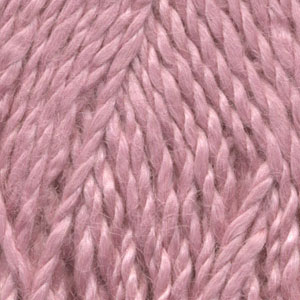
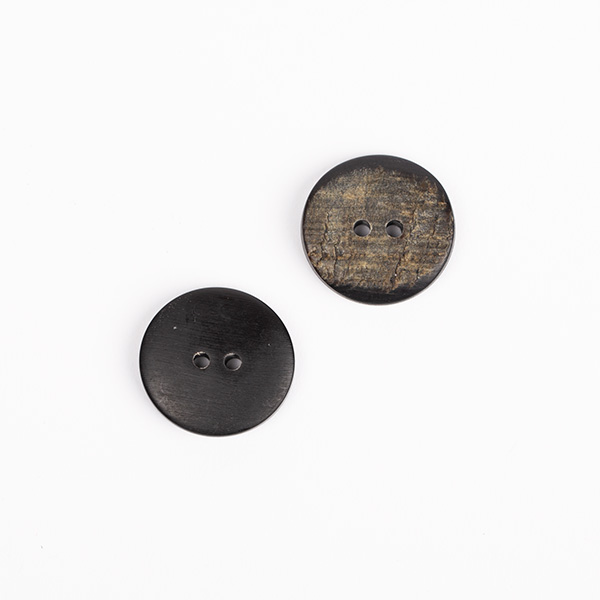

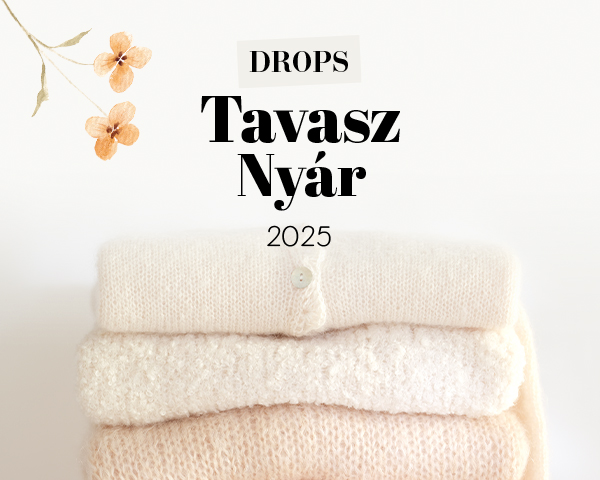




































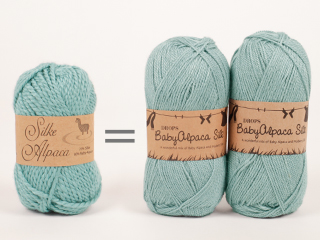













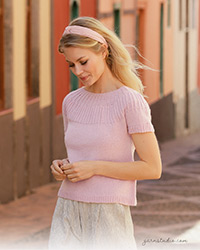
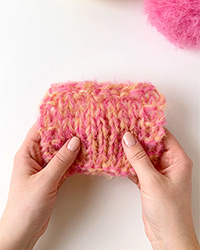
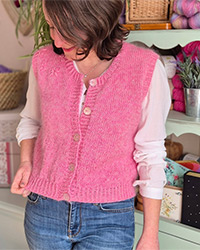
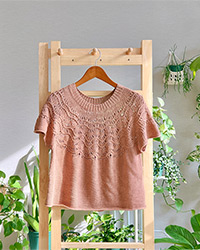
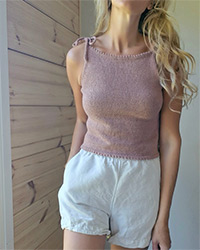

Post a comment to pattern DROPS 113-17
Szívesen vesszük, ha megosztja velünk gondolatait erről a mintáról.
Ha kérdést szeretne feltenni, ügyeljen arra, hogy a megfelelő kategóriát válassza ki, így fegyorsíthatja a válaszadás folyamatát. Það verður að merkja við svæði merktri með *.